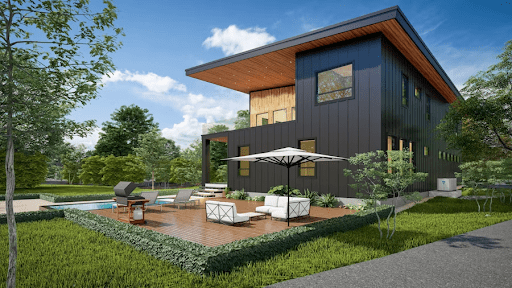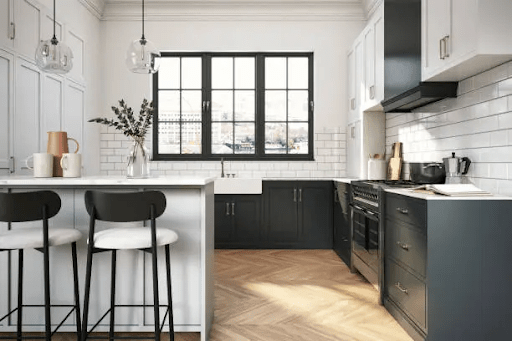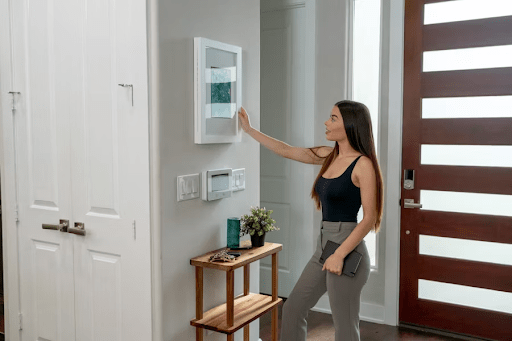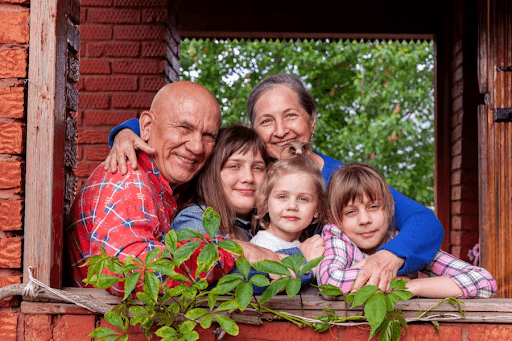
Modern lifestyles are transforming home design. This article explains how evolving lifestyles influence the way we design our homes, touching on busy schedules, remote work, wellness features, technological advancements, and sustainability. Discover the impact of these changes on room layouts, furniture choices, and overall living space functionality.
The Impact of Busy Schedules and Urban Living
In today’s fast-paced world, busy schedules and urban living profoundly influence home design. Modern living demands that our homes be more than just sleeping quarters; they must be functional, comfortable, and conducive to relaxation, often requiring the expertise of an interior designer.
Modern homes are increasingly incorporating wellness features to cope with daily hustle. A massage chair, for example, has become a necessity for many, offering a much-needed escape from daily routines. Layered lighting enhances both functionality and aesthetics, supporting versatile spaces that adapt to different activities and moods.
Urban living often means dealing with limited space, making smart planning and design even more critical. Focusing on multifunctional and adaptable functional spaces allows us to create environments that cater to various needs, whether for working, relaxing, or spending time with family, all under one roof.
The key lies ahead in designing housing that not only meets our practical needs but also offers a sanctuary from the stresses of modern life.
Remote Work and Hybrid Living
Remote work has fundamentally changed how we use our living spaces. No longer confined to traditional office settings, more people are able to work remotely, necessitating adaptable making spaces that transition seamlessly between work and leisure. Multipurpose rooms have become essential, allowing home offices to adapt to varying needs and create personal spaces.
Modern home styles now prioritize flexible room designs to accommodate these lifestyle changes. This flexibility allows for quick transitions between different functions, optimizing limited areas for maximum efficiency. Multifunctional furniture like storage ottomans and extendable tables maximizes space and utility, making it easier to balance work and family life in a modern farmhouse.
Moving and rearranging homes have become part of adapting to evolving lifestyles. Sydney home removalists, for example, help families adjust to new spaces, ensuring homes remain flexible and functional despite daily life changes. As our lifestyles evolve, so must our living environments, reflecting the dynamic nature of modern living.
Balancing Aesthetics and Usability in Modern Homes
Balancing aesthetics and usability is paramount in the quest for the perfect home. Modern home design emphasizes that each element must serve a purpose, enhancing functionality without compromising style. This approach ensures living spaces are visually appealing, practical, and comfortable.
A great example of this balance is the trend of choosing furniture that is both stylish and functional:
- Oversized, soft pieces blend style with inviting comfort, making them perfect for modern homes.
- Selecting easily movable or storable furniture helps maintain an open atmosphere, particularly in smaller spaces.
- Black stools combine utility with style in sleek kitchen setups.
Colors and textures also play a significant role in creating functional yet aesthetically pleasing spaces. The right colors can influence mood, with calming shades ideal for bedrooms. Combining different textures adds visual interest and depth, making a space both functional and beautiful. Focusing on these elements helps homeowners create their dream home, balancing usability and aesthetics.
Prioritizing Relaxation and Mental Health
As mental health and well-being gain recognition, home design has evolved to prioritize relaxation and comfort. Modern homes now incorporate wellness-centric spaces, such as Zen Dens, which use calming light and natural elements to create serene environments. These spaces serve as sanctuaries where individuals can unwind and recharge, enhancing overall well-being.
Wellness features like smart saunas are becoming increasingly popular. These saunas support personal health goals by offering benefits such as detoxification, improved circulation, and enhanced immunity through infrared therapy. The latest infrared sauna technology allows users to customize their wellness experience with pre-set health programs, making it easier to integrate these features into daily life.
Design choices today go beyond aesthetics, focusing on serving the emotional and physical wellbeing needs of inhabitants. People are prioritizing relaxing, comfortable spaces at home, dedicating corners for activities like reading and mindfulness. Creating environments that foster relaxation and mental health ensures that living spaces contribute to a healthy life, balanced lifestyle.
Technology and Sustainability Shaping Future Homes
The future of home design is shaped by technology and sustainability. AI-driven technology enhances convenience by anticipating residents’ needs and automating tasks, making daily life more efficient and comfortable. This advancement is complemented by a growing emphasis on sustainable living, with homes increasingly built using eco-friendly materials like reclaimed wood and recycled metals.
These trends reflect a shift towards creating homes that blend indoor and outdoor elements, promoting a connection to nature while minimizing environmental impact. Adaptable furniture and wellness-focused layouts are also becoming more prevalent, allowing flexible homes to evolve alongside the changing needs of their inhabitants.
As we face environmental challenges, designing homes that are both sustainable design and functional is crucial. This includes incorporating energy-efficient appliances, better insulation, and renewable energy sources like solar panels. Embracing these innovative approaches helps create homes that are comfortable, stylish, and environmentally responsible, enhancing building efficiency and reducing energy consumption while saving energy and optimizing energy usage.
Integrating Smart Home Technology
Integrating smart home technology into modern homes is now a necessity. These devices enhance daily convenience by allowing remote control of lights, appliances, and security systems from smartphones, making it easier to manage household tasks. For instance, smart thermostats optimize heating and cooling based on user behavior, improving energy efficiency and reducing costs.
Smart home devices should blend seamlessly with the decor, enhancing usability without compromising visual appeal. This integration ensures homes remain stylish while benefiting from the latest technological advancements. For example, smart security systems provide real-time monitoring and alerts, enhancing home safety and giving homeowners peace of mind.
Wellness technology, such as infrared saunas, can also be integrated into smart home systems. These saunas allow users to schedule sessions and track health metrics, offering numerous health benefits and supporting personal wellness goals. Embracing smart home technology helps homeowners create adaptable, efficient, and secure living environments that cater to modern needs.
The Shift Towards Minimalism
The shift towards minimalism in home design emphasizes simplicity, efficiency, and tranquility. This trend transforms living spaces into havens of calm by reducing clutter and focusing on essential elements. The result is a more serene living environment that promotes stress-free living.
Functional aesthetics are at the core of minimalist design, creating visually appealing yet practical spaces through careful selection of furniture and decor. Clean lines and a neutral color palette characterize this style, enhancing the sense of order and simplicity. Adopting minimalism helps homeowners create environments that foster tranquility and well-being.
As lifestyle changes and growing awareness of climate change influence design choices, minimalism offers an innovative approach to creating sustainable, functional homes. This trend is increasingly popular among those seeking to simplify their lives and focus on what truly matters, making it a key element of modern home design and modern heritage.
Embracing Outdoor Spaces
The desire to enhance outdoor living spaces has grown significantly, reflecting a shift towards more holistic home design. Establishing clear traffic patterns and strategically arranging furniture can create distinct zones for dining and relaxation, making outdoor areas more user-friendly. This approach ensures outdoor spaces are functional and inviting, catering to various activities and gatherings.
Decorative elements like fire pits, sculptures, and water features add visual interest and character to outdoor spaces. These features create focal points that anchor the design and guide the arrangement of furniture, enhancing the overall outdoor experience. Additionally, container gardening offers an easy way to introduce vibrant colors and textures without significant commitment.
Natural materials and biophilic design principles are integral to creating sustainable and aesthetically pleasing outdoor spaces. Incorporating these elements helps homeowners create environments that seamlessly blend with nature and natural light, promoting a sense of well-being and connection to the outdoors. This holistic approach to outdoor living reflects the growing desire to make the most of every part of our homes.
Multigenerational Living Considerations
Creating multi generational living spaces involves balancing practicality with aesthetic considerations to suit diverse family needs. These arrangements offer financial benefits, emotional support, and shared caregiving roles, making them attractive for many families. The growing trend of multi generational living is influenced by economic challenges, an aging population, and cultural shifts.
Accessible home design is crucial for accommodating family members with chronic illnesses or those who wish to age in place. Practical modifications in areas such as bathrooms and kitchens can significantly enhance the quality of life for these individuals. Engaging experts in aging-in-place design is recommended for effective planning of home modifications.
Incorporating universal design principles ensures that home spaces are functional and welcoming for individuals of all abilities. This approach addresses the needs of different life stages and creates adaptable living spaces that can evolve with the family over time. Making informed choices helps homeowners create environments that support multigenerational living while maintaining a harmonious living environment.
Personalizing Space with DIY Projects
The trend of personalizing spaces through DIY projects is gaining popularity as homeowners seek to reflect their individuality in their living environments. This shift towards expressive and nostalgic styles challenges minimalism, leading to the resurgence of mid century modern and eclectic designs. Engaging in DIY home projects provides a unique opportunity to customize your environment and add depth and character to your home.
DIY projects not only cut costs but also allow homeowners to infuse personal style into their spaces. Some popular DIY projects include:
- Transforming old furniture through upcycling or painting to turn dated pieces into unique focal points.
- Creating custom wall art to showcase artistic flair.
- Crafting DIY headboards to enhance room aesthetics.
Additionally, making your own planters from repurposed items adds a creative touch while introducing greenery to your living space. Embracing DIY projects helps homeowners create spaces that truly reflect their tastes and personalities while fostering a sense of accomplishment and pride.
Summary
As we have explored, evolving lifestyles significantly influence the way we design our homes. From accommodating busy schedules and remote work to prioritizing relaxation, integrating smart technology, and embracing minimalism and outdoor spaces, modern home design is all about adaptability and personalization. These trends highlight the importance of creating living environments that balance comfort, style, and function.
In conclusion, our homes will continue to grow and adapt with us, reflecting the dynamic nature of our lives. By making informed choices and embracing innovative design trends, we can create homes that not only meet our practical needs but also enhance our overall quality of life. The journey towards creating the perfect living space is ongoing, but with each step, we get closer to our dream home.
Modern lifestyles are transforming home design. This article explains how evolving lifestyles influence the way we design our homes, touching on busy schedules, remote work, wellness features, technological advancements, and sustainability. Discover the impact of these changes on room layouts, furniture choices, and overall living space functionality.
How Early Should You Book International Flights for the Best Deals?










